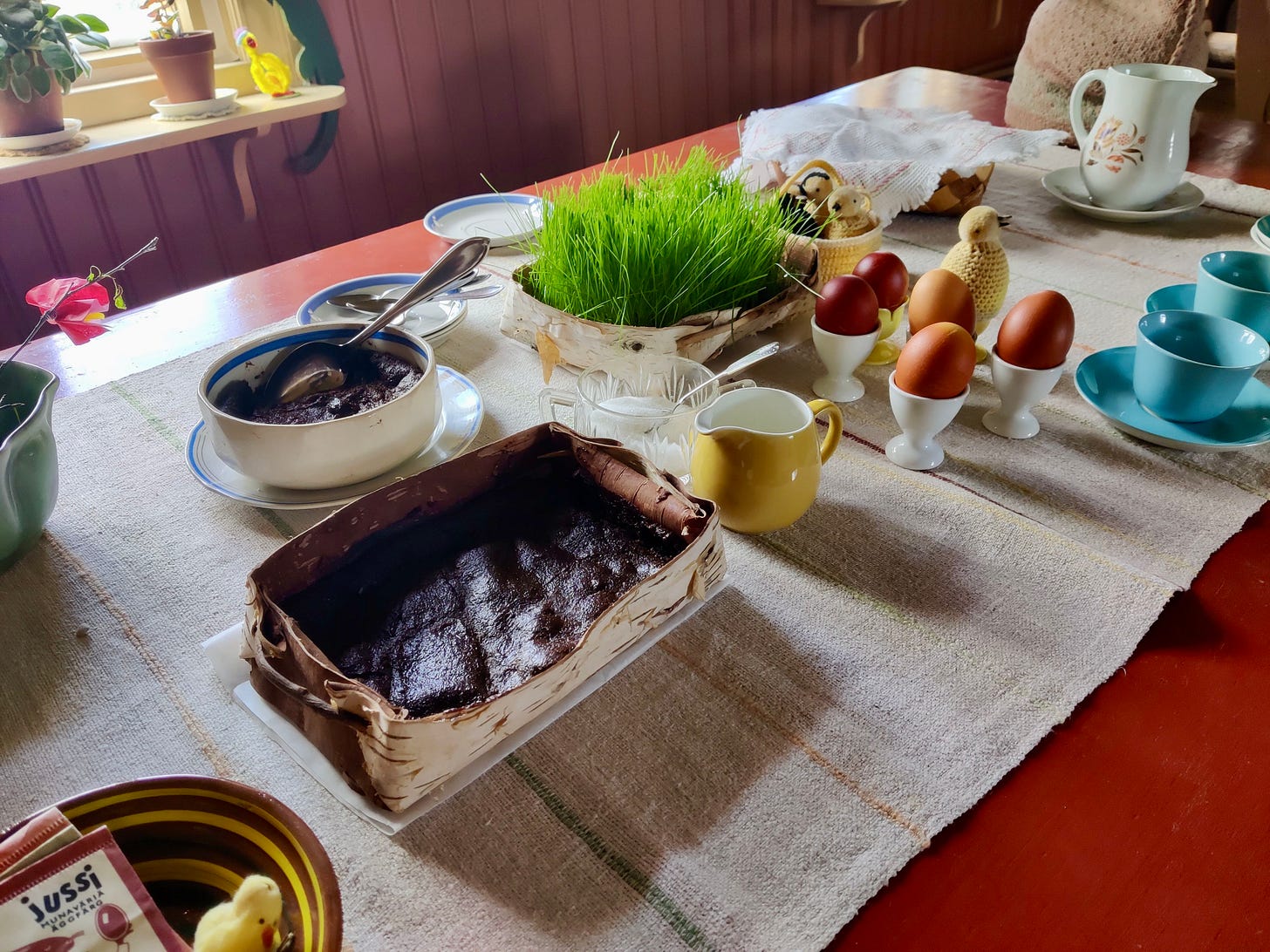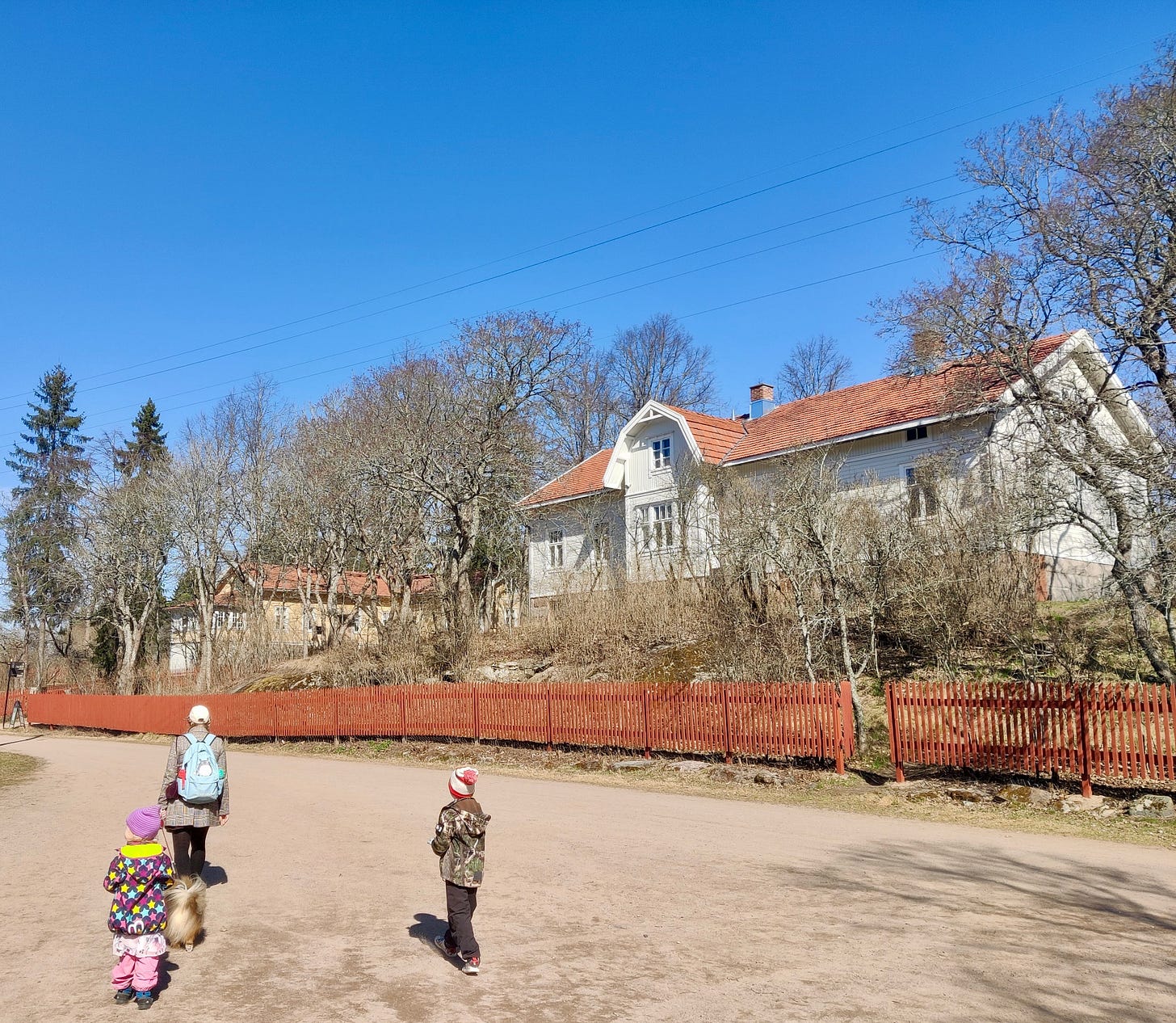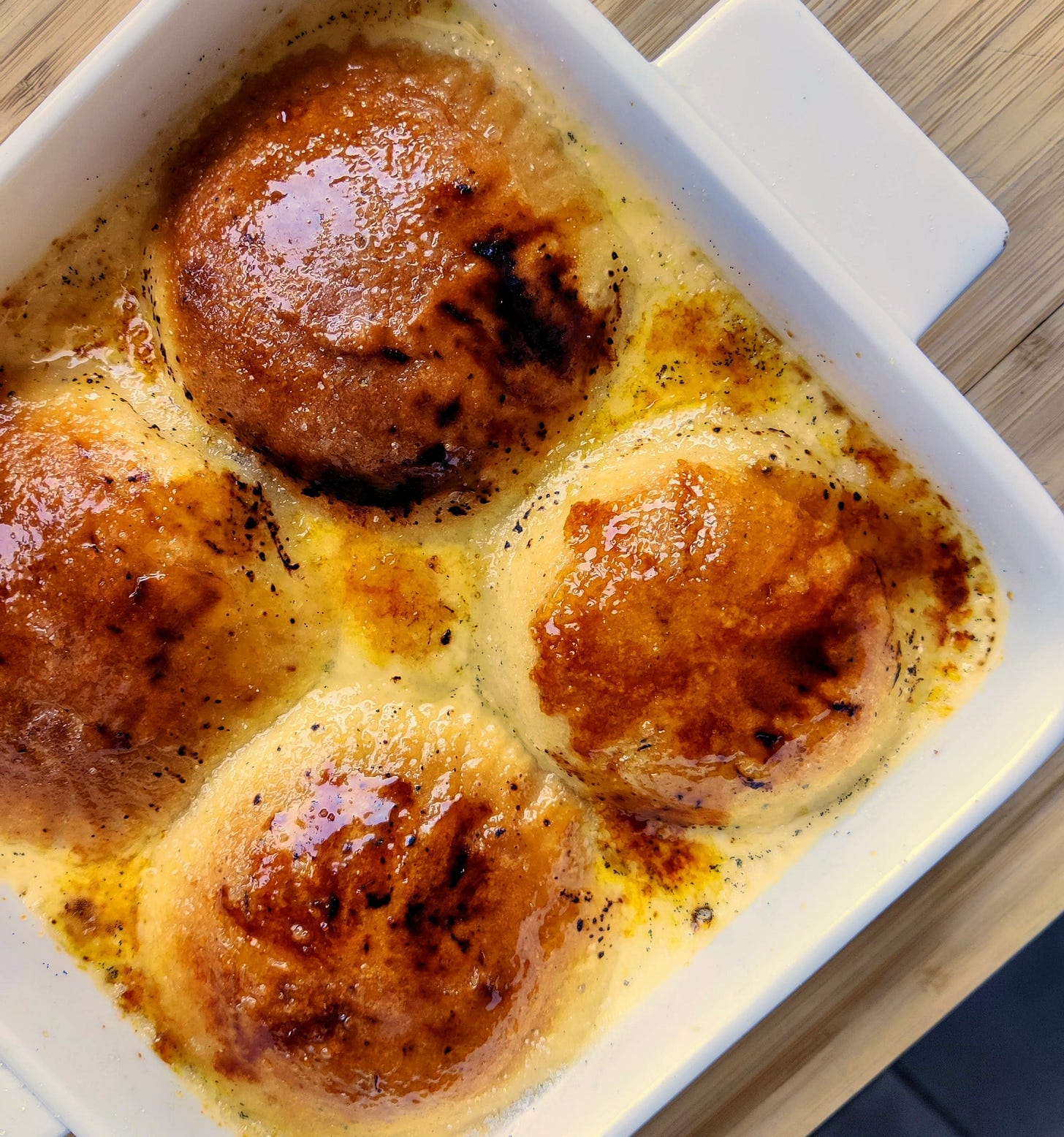A Taste of Finnish Easter
And a recipe for honey custard bun brûlée pudding
Hello and welcome to a wee Easter missive for you from The Recovering Line Cook.
First, a small word of infinite gratitude to those who have signed up as paid subscribers recently. I know this influx is much to do with the launch of my new paid subscriber bonus The Prep List and your support means everything to me. Income from this newsletter makes a huge difference these days. So, thank you.
And if you want to support me as a writer and to get access to my new serialised cookbook The Prep List (I’m really excited about it) please click below and upgrade your subscription.
The Returning Winter
I’ve had 5 years to get used to Finnish life now and I’m convinced spring and autumn just don’t exist here. Instead, winter moves to summer like a switch flickering back and forth. Over the past few days as I’ve been writing this edition of The RLC, it has gone from balmy Nordic shorts weather to snowing once again, to something entirely summer by my standards.
They call this takatalvi in Finnish, which I like to translate as The Returning Winter.
Luckily for us the returning winter departed once again in time for the weekend (April 12/13) for us to visit an absolutely idyllic little place not from from where we live in Turku, Finland called Kylämäki.
Kylämäki is a charming little preserved 1950’s rural farm village, though the area has been inhabited since the Iron Age (with an Iron Age burial site to prove it). And, since I’m very much turning into some kind of home-smoking, culture-my-own-butter throwback in my old age, Kylamäki is something of a heaven to me.
Certainly in this weekend’s weather.


With Easter a few days away, the farm houses of Kylämäki had been set up with traditional Finnish Easter dishes and decorations. And, since traditional is often how things are done even in modern Finnish houses, mine included, that segues nicely to me telling you all about them!

Try the brown stuff, it’s delicious
The particularities of Easter in Finland have made it one of my very favourite times of year.
For one thing, the Finns have invented what I do consider (despite my enduring love of those hollow chocolate eggs, Cadbury’s Mini Eggs and Creme Eggs) the Platonic Ideal of the chocolate egg.
It comes in the form of the Fazer Mignon, an egg that is as delicious as it is singularly stylish.
What you are looking at is a real chicken egg shell, divorced of its eggy innards, and replaced with a filling of almond and hazelnut chocolate nougat. No dairy at all, which I suppose, would make it vegan if it weren’t for, well, the egg shell bit of it.
In fact, those hollow chocolate eggs aren’t a thing here in Finland at all. Instead, we fill cardboard eggs decorated with terrifying cartoon characters with candy of our choosing…
On the more esoteric end of Finnish Easter delicacies, certainly less accessible to modern palates than a Mignon, is mämmi.
This traditional Finnish Easter dessert is made from rye flour, water, malted rye, sugar, salt, and (sometimes) orange zest. It’s slowly baked into a dark, sticky pudding with a malty, slightly bitter-sweet flavour. Yes it does look rather like mud or tar, but with a splash of cream and liberally dusted with sugar, it’s really pretty fucking good. A bit like when your morning Weetabix has been left in the milk too long and it goes all soggy.
Well, if that sounds good to you, you’d maybe not hate it.
Easter witches
Another idiosyncratic tradition entirely new to me with my adoption of Finnish life, is that of the Witches of Easter.
Young children will dress up as Easter witches at this time of year, put on colourful old clothes, add freckles to their faces (?) and wrap scarfs around their heads in that babushka style. As you’d more likely expect at Halloween, these young witches will go door-to-door, carrying willow twigs with garish feathers and crepe paper attached to them, which they offer as blessings to ward off evil spirits in exchange for, yep, candy. They will recite (as my wife has tried in vain to teach me)
Virvon, varvon, tuoreeks terveeks, tulevaks vuodeks; vitsa sulle, palkka mulle! (I wave a twig for a fresh and healthy year ahead; a twig for you, a treat for me!)
I’d love to share a picture of my kids in their Easter witch garb, but in place of that, you can enjoy this one of my dog instead.
A Recipe for Honey Custard Bun Brûlée Pudding
If there’s a dish I consider very nearly perfect, it would be creme brûlée.
But only nearly perfect..
Being largely cream and sugar, the portion is always too small. To eat one means inevitably to hear the sound of a hundred taps of metal on porcelain as the eater, heartbroken at that last bite being taken, desperately scrapes the dish for any final scraps with their spoon.
The dessert I have for you today is my attempt at extending that brûlée experience. It is one part French toast, one part creme brûlée, one part traditional English bread pudding.
The “bread” element here comes in the form of leftover buns you might recognise from this recipe.
Now, normally for a bread pudding sliced bread would be used, but for my recipe I want us to keep the buns whole. I really feel doing so benefits the dish in many ways. Firstly, doing so reduces the surface area on the top of the pudding, keeping everything flatter, which makes dusting with sugar and brûlée-ing it that much easier and effective. Secondly, I find baking the buns whole makes for a more cohesive internal texture that contrasts so well with the crunchy topping.
I hope that sells it.








